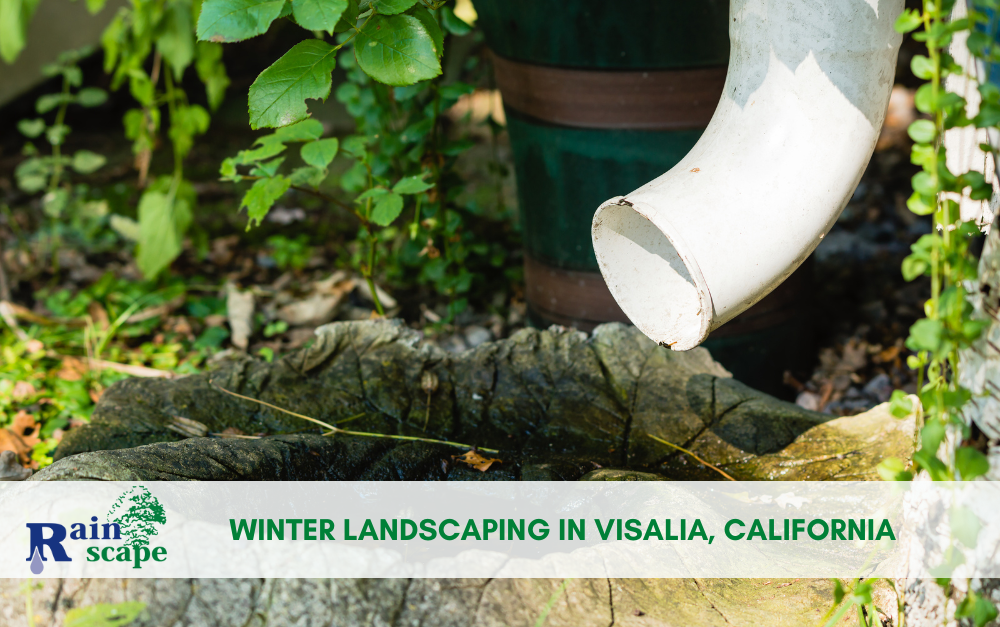Winters in Visalia, and California in general are milder than other parts of the United States. We may not have the picturesque white snow blanketed landscapes, but we do have colder temperatures and more precipitation that can shock our vegetation. It’s important that we prepare our landscapes for seasonal shifts so that we can have our dream flower and vegetable gardens come spring.
The following tips will help you to set up your plants for success and can make quite a difference for your home’s exterior ambience.
Fix drainage Issues
Proper drainage will prevent your lawns and plants from becoming waterlogged. Take the time to add drainage lines and add fillers where you need to enable water to move in a way that is beneficial. Drain rock is helpful for back-filling perforated drainpipes and French drains as it helps water to flow in the direction intended. You can also use horticulture lava as a soil amendment to add pore spaces in your soil. It’s important as well to take the time to clean out your gutters to ensure that they drain properly as well.
Prep your soil
Amending or fertilizing your soil can improve its overall structure. You can improve water retention, permeability, aeration, water infiltration and drainage. If you want to make sure that the roots have the best environment to grow add nutrients and compost or fertilizers as necessary. Aeration is a great way to prevent your roots from suffocation and is most important during winter.
Remove leaves and debris from your lawn
Your lawn needs to breathe too. Take the time to remove all dead plant matter and debris from the surface of your lawn. Removing debris will allow for adequate moisture and prevent root rot as well as prevent unwanted pests from moving in. To keep your yard waste down, you can compost the leaves and debris and use them in the spring or summer.
Select plants that thrive in winter
The best way to ensure healthy growth is to select California native plants. Native plants are accustomed to winter in the San Joaquin and Central Valley and the shorter days. Choose variations that will compliment your home’s exterior design. You can keep plants growing now that don’t like our summer heat. Leafy greens, cabbage, peas, cauliflower, broccoli, and other plants will enjoy a break from the summer sun. It’s a good time to plant spring annuals, early summer bulbs, shrubs, and bare-root trees to allow them time to ripen. Keep an eye on the weather and don’t plant before a hard freeze or cold snap.
Add a winter blanket of mulch
Applying mulch to your soil will insulate and protect your plant roots that are close to the top of the soil and most susceptible to freeze-thaw patterns. Mulch will also act as a warm incubator and improve your soils microbiome. You gain the bonus of reduced weed growth and retained moisture.
Prune wisely
Take the time to prune deciduous fruit trees once they’ve become dormant. Give love and attention to your shrubs, hedges and trees and remove any decaying or dead branches. Shrubs and trees that bloom on old growth should be pruned in late spring or summer after their flowers fade and those that bloom on new growth should be pruned in winter and early spring. Don’t prune frost-damaged plants, they need the protection from the next frost.
Cooler temperatures allow us the opportunity to work in our gardens easily and prepare and plan for optimal success. By caring for soil and warding off the negative effects of frost you can have a garden you’ll enjoy year-round. If you have any questions or landscaping needs, we would be happy to help.

